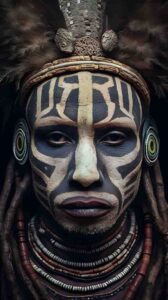Peru is home to a diverse array of indigenous tribes, each with its unique culture, language, and traditions. Here’s a list of some of the notable tribes in Peru:
- Asháninka
- Shipibo-Conibo
- Aguaruna (Awajún)
- Quechua
- Aymara
- Machiguenga (Matsigenka)
- Yagua
- Bora
- Huitoto (Witoto)
- Cocama-Cocamilla
- Matsés (Mayoruna)
- Shawi (Chayahuita)
- Urarina
- Achuar
- Secoya
- Candoshi
- Yine (Piro)
- Amahuaca
- Huambisa (Wampis)
- Chanka
- Caquinte
- Cashibo (Kashinawa)
- Matsigenka
- Asheninka
- Puinave
- Iskonawa
- Junikuin
- Kakataibo
- Matsés (Mayoruna)
- Sharanahua
- Yaminahua
This list is not exhaustive, as there are many more smaller or lesser-known tribes in Peru. Each of these tribes has its own distinct languages and customs, contributing to the rich cultural mosaic of the country.
In Peru, some indigenous tribes are notably larger and more influential due to their significant populations and cultural impact. Here are the most populated tribes in detail:
1. Quechua
- Population: Approximately 4 million in Peru.
- Location: Primarily in the Andean highlands, particularly in regions like Cusco, Ayacucho, and Puno.
- Language: Quechua, with several dialects.
- Culture: The Quechua are descendants of the Inca civilization, maintaining rich traditions in agriculture, weaving, and music. Their society is community-oriented, with festivals and rituals playing a central role in their cultural identity.
2. Aymara
- Population: Around 500,000 in Peru.
- Location: Mainly in the southern highlands near Lake Titicaca, in regions such as Puno.
- Language: Aymara.
- Culture: The Aymara are known for their agricultural skills, particularly in growing potatoes and quinoa. Their society has a strong emphasis on communal work (ayni) and they have a rich heritage of folklore, music, and dance.
3. Asháninka
- Population: Approximately 100,000.
- Location: Eastern Peru, in the Amazon rainforest, particularly in regions like Ucayali and Junín.
- Language: Asháninka.
- Culture: The Asháninka have a deep connection to the rainforest, relying on it for food, medicine, and materials. They practice slash-and-burn agriculture and hunting. Their culture is rich in myths, legends, and spiritual practices centered around nature.
4. Shipibo-Conibo
- Population: Around 35,000.
- Location: Along the Ucayali River in the Amazon Basin.
- Language: Shipibo.
- Culture: Known for their intricate geometric designs, the Shipibo-Conibo are skilled in pottery and textiles. Their shamanistic traditions and use of ayahuasca for spiritual and healing purposes are well-known.
5. Aguaruna (Awajún)
- Population: Approximately 55,000.
- Location: Northern Peru, in the Amazonian regions of Amazonas and Cajamarca.
- Language: Awajún.
- Culture: The Aguaruna are recognized for their warrior traditions and resistance to outside influence. They practice shifting agriculture and hunting. Their society values independence and has a strong sense of community.
6. Matsigenka (Machiguenga)
- Population: About 12,000.
- Location: Southeastern Peru, in the tropical rainforest regions of Cusco and Madre de Dios.
- Language: Matsigenka.
- Culture: The Matsigenka live in small, scattered settlements and rely on hunting, fishing, and agriculture. They have rich oral traditions and a deep understanding of the rainforest ecology.
7. Yine (Piro)
- Population: Around 6,000.
- Location: Regions such as Cusco, Loreto, and Ucayali.
- Language: Yine.
- Culture: The Yine people practice agriculture, hunting, and fishing. They are known for their basketry and traditional medicine practices. Social organization revolves around extended family groups.
These tribes, among others, contribute to the cultural and linguistic diversity of Peru. Each group has adapted to its environment and preserved unique traditions despite historical challenges and modern pressures.